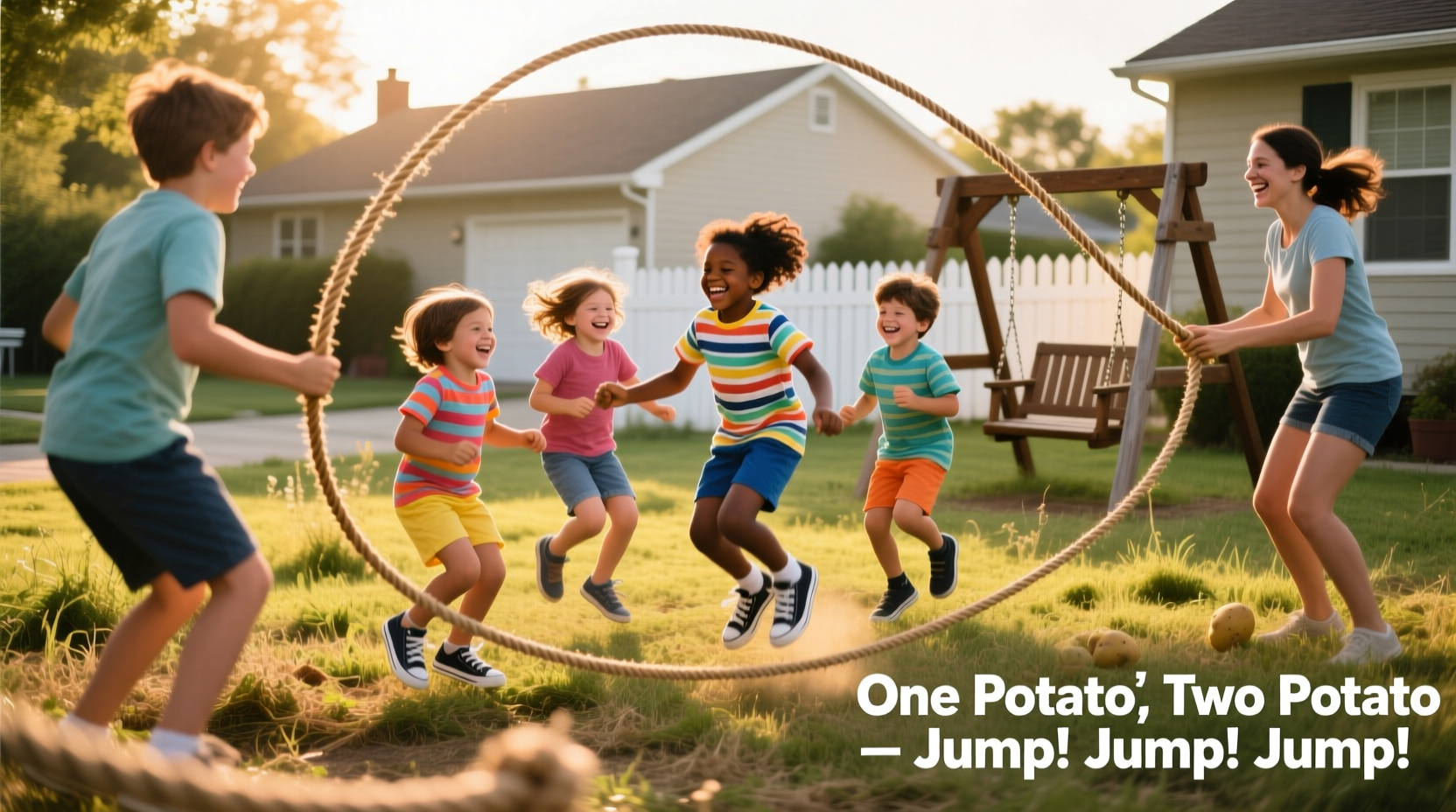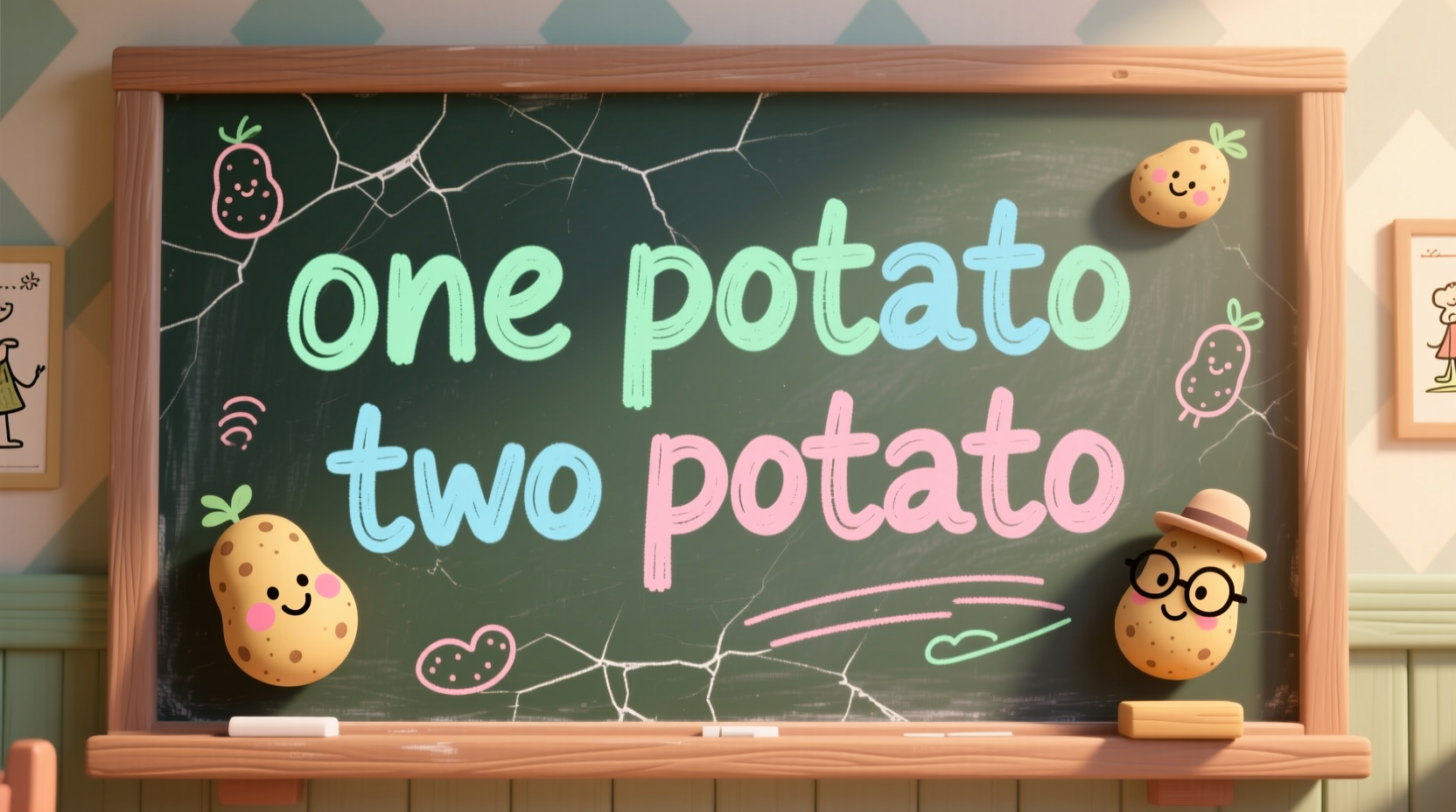Discovering the Origins of This Timeless Children's Rhyme
When children chant \"one potato two potato\" while jumping rope or making group decisions, they're participating in a cultural tradition with surprising historical depth. This seemingly simple counting rhyme actually represents one of the most enduring forms of children's folklore, with documented usage spanning over two centuries across multiple continents.
How the One Potato Two Potato Game Works
Understanding how to play the one potato two potato counting game reveals why it has remained popular through generations. The complete sequence follows this pattern:
- Children form a circle or pair up for hand-clapping
- They chant \"One potato, two potato, three potato, four\" while counting participants
- Continuing with \"Five potato, six potato, seven potato more\"
- The person landed on when saying \"more\" is selected or eliminated
This one potato two potato jump rope variation works similarly, with the jumper continuing until the rhyme completes. The game's mathematical structure helps children develop counting skills while providing entertainment. For those wondering how to play one potato two potato game properly, the key is maintaining consistent rhythm and clear enunciation to ensure fair selection.
| Region | Common Variation | Unique Cultural Element |
|---|---|---|
| United States | \"One potato, two potato, three potato, four...\" | Often used for team selection in playground games |
| United Kingdom | \"Eeny, meeny, miny, moe\" with potato counting alternative | Historically connected to Celtic counting traditions |
| Australia | \"One potato, tata, tata, four...\" | Incorporates Aboriginal counting influences in some regions |
| Canada | \"Un patate, deux patate\" in French-speaking regions | Bilingual adaptations reflect cultural diversity |
Historical Evolution of the Potato Counting Tradition
The one potato two potato history traces back to early 19th century England, where similar counting-out rhymes appeared in playgrounds. According to folklore records from the Library of Congress American Folklife Center, these rhymes evolved from earlier agricultural counting methods used by farm workers.
By the late 1800s, the phrase had spread to North America through immigration patterns. The Journal of American Folklore documented multiple variations in their 1894 publication, noting how children adapted the rhyme to local contexts while maintaining its core structure.
What makes the one potato two potato cultural origins particularly fascinating is how it transformed from practical agricultural counting into children's entertainment. As potatoes became a staple crop worldwide, the vegetable naturally entered children's vocabulary and games, creating this enduring tradition.

Practical Applications for Modern Educators and Parents
Today's educators recognize the educational value in traditional one potato two potato variations. The rhyme serves multiple developmental purposes:
- Mathematical development: Reinforces counting skills through rhythmic repetition
- Social skills: Teaches fair selection methods and group decision-making
- Language development: Enhances phonemic awareness through rhyming patterns
- Physical coordination: Supports motor skills in jump rope and hand-clapping versions
When implementing the one potato two potato jump rope rules in educational settings, teachers should emphasize the counting aspect rather than elimination. For example, having children continue jumping through multiple cycles builds endurance and reinforces numerical sequences beyond ten.
Preserving Cultural Heritage Through Playground Traditions
The endurance of the one potato two potato counting game demonstrates how children naturally preserve cultural knowledge through play. Unlike formal educational methods, these organic traditions transmit values and skills across generations with remarkable consistency.
Researchers at the American Folklore Society note that such counting rhymes serve as \"cultural DNA\"—simple structures that carry complex social information. The one potato two potato variations by country reveal how communities adapt universal traditions to reflect local identities while maintaining core functionality.
As digital entertainment increasingly dominates children's lives, preserving these physical play traditions becomes more important. The tactile, social nature of the one potato two potato game offers benefits that screen-based activities cannot replicate, making its continued practice valuable for child development.











 浙公网安备
33010002000092号
浙公网安备
33010002000092号 浙B2-20120091-4
浙B2-20120091-4